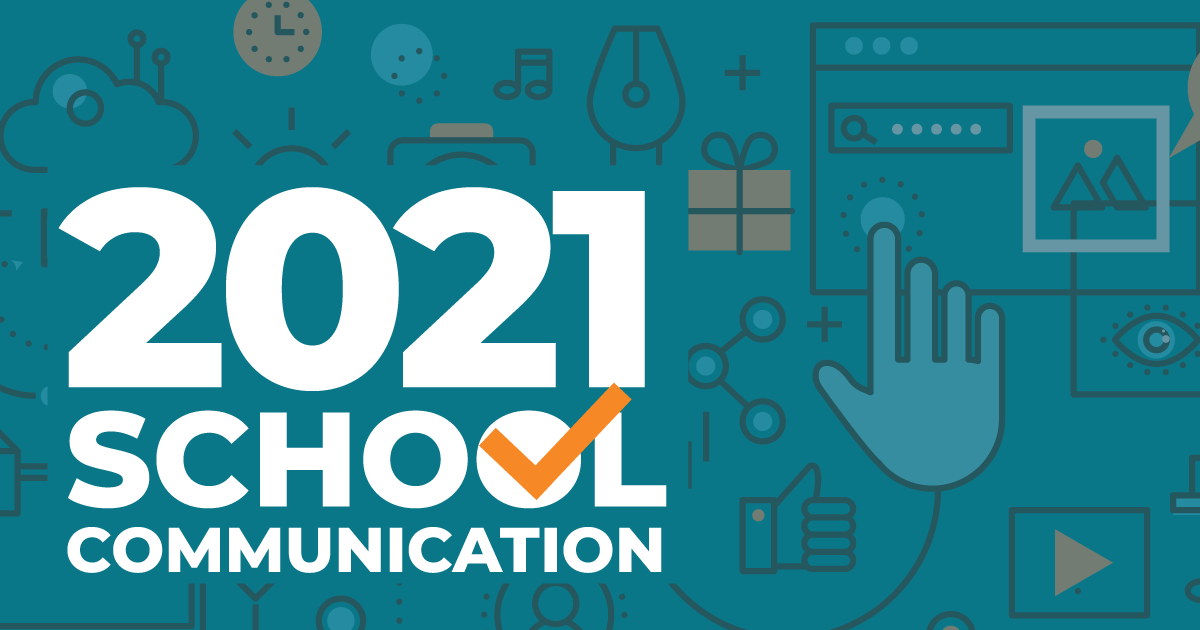Communications for schools is more multifaceted than ever these days. The preeminence of digital channels, the sensitivity of privacy issues, social media, and advancing technologies in general make putting together and executing a communications plan quite the challenge for any school communications professional.
This communications planning checklist is designed to help guide you and your staff as you go about your planning process. It’s a high-level, best-practices look at the current considerations that today’s savvy school communicators are weighing as they engage parents and serve their school stakeholders.
Some school administrators have a good handle on understanding and navigating the many factors that go into a solid plan. For those, this list will serve to remind you of the key components of a modern, well-rounded communications plan. A check-up, if you will.
Others, for reasons of tight budgets, static professional development, or otherwise, might need some help to make sure they cover all the key bases in their planning. This checklist underscores the need to attend to the areas where your school could be performing unsatisfactorily.
Follow the checklist and refer to the more comprehensive Communications Planning Guide to take a strategic approach to your communications planning, get up to speed on the key digital channels, and begin a process for implementing and measuring an effective school communications plan.
School communications plan 9-point checklist

1. Confirm mission and goals.
Some schools execute their communications plans void of the fundamental step of a well-articulated mission. Even if you have one, it’s a good idea to re-visit it annually, and make sure it’s a workable one that aligns with strategic goals that will move your school forward. Great communications starts with a clear mission and achievable goals that have the support of school leadership and are shared at every level of school administration.
Good communications planning is more than just doing what you’ve done last year and the year before that. Start with assessing your own communications mission – is it tightly aligned with the district or school? Then, establish clear, achievable goals
See article: 7 Signs Your School Communications Plan is Weak

2. Reach all your audiences.
Often, schools will focus on just one or a few aspects of the school community while neglecting other key audiences. The school community is a lot broader than many people think. Think in terms of internal, parent/family, and external groups to cover all your bases. Audience segmentation determines the goals and actions you need to take, so be certain to take into account all your audiences audiences when creating your plan, and set realistic goals that align with each group within those broad groups respectively.
Your school community is much larger than just parents. Target and involve other groups in your planning process – staff, students, alumni, media, business and even the faith community.
Target and survey audience groups.
Avoid creating your communications plans in a vacuum void of any real usable data. Surveys are an excellent method to gather key communications performance data that can go a long way in both goal-setting and measurement. Take the pulse of your parents, staff and students – yes, students – to get a better handle on their respective communications needs. Surveys using website forms built-in to web pages and social media accounts make it easy to create, distribute and tabulate the results quickly.
See article: The secret to building an effective parent survey

3. See what others are doing
With the scope of communications for schools expanding, and the number of tools and tactics needed to be effective also growing, you owe it to yourself and your school to look at what other schools are up to with their communications. Start with the schools near yours or ones that present competition to your enrollment. Check out their websites, explore their social media, see what they’re doing well and not so well. To give you something to shoot for, check out the National School Public Relations Associations annual communications award recipients and other NSPRA planning resources.
Look around at neighboring districts and schools. See who’s doing it right and not so right.
See article: Top 10 school district website design examples

4. Master today’s channels.
Understanding today’s communications channels – their possibilities, limitations and risks – sounds easy enough, but with advancing technologies, it requires great diligence to stay current with the channels that will do you the most good. Engaging your entire school community requires mastering the online methods that enable your school to be front and center 24/7. From websites, to notifications, to mobile access and more, how you use these channels and others can make the difference between a successful and failed communications plan.
Don’t be one dimensional, learn about all the key channels driving best practices.
See article: 6 key school communication channels and how to use them

5. Balance your content.
School communications is about more than just news and announcements. Organizing and gathering your messages and content requires a discipline that assures you are delivering the kinds of information your users need when they need it. From the time-critical news that needs immediate attention, to the human-interest stories and images that help shape your school’s brand, people want to be able to access content on their own terms. How you integrate all this variety of content needs to be part of your communications plan.
School content is about much more than calendar events. Personalize your school with the human interest and many kinds of achievements by staff and students.

6. Embrace social media.
The advent of social media is a phenomenon that has transformed how schools communicate – or let’s say ‘ought’ to communicate. Yes, some schools are kicking, screaming and dragging their heels when it comes to this preferred method that students, staff and parents use to get the news and information that’s important to them. Social media needs to be a priority consideration in your communications planning to reach the increasingly mobile school community that relies on channels such as Facebook, Twitter and Instagram to engage with who and what matters most.
It’s not going away folks. It’s how people are getting their news, information, entertainment. Make sure you’re part of the social media mix.
See article: When to use the right social media for your school

7. Ensure privacy and accessibility.
Protecting your school (and your job) is of paramount importance to any school communicator, so be sure you’re toeing the the line when it comes to the increasing legal aspects of a communications plan. Do you have permission to use a student’s image on your school’s Facebook page? Is your website ADA compliant? Is online access to student data violating FERPA privacy laws? Are you sure all your parents are provided an opt-out media release form for their children? A communications plan requires a legal diligence to ride herd on the many regulations schools face. Mind your Ps and Qs. There are legal and ethical reasons to have your ducks in a row.
See article: How to make an ADA-compliant school website
See article: WCAG 2.1 and what it means for school website ADA compliance

8. Promote the plan.
Just like the cobbler’s child who has no shoes, sometimes even the best communicator fails to tout what could be a very good school communications plan. Spread the word to get all your audiences fired up about all you’re doing, and be sure to start with your internal audience. Let school leadership, staff, teachers and parents in on what your goals and methods are. Students, teachers and other staff can be real champions for what you're doing. Explore all your digital and non-digital channels, parent groups, and assemble a speaker’s bureau to extend your school’s reach about how your school puts a premium on communicating.
Be sure to let school leadership, staff, teachers and parents in on what your goals and methods are.
See article: 5 hot tips for marketing your school district

9. Measure. Adjust. Keep measuring.
Communications planning and execution are ongoing. Whether you’re using NSPRA’s recommended four phases of planning (research, analyze, communicate, evaluate) or some other mantra for effective planning, measuring what you’re doing completes the loop – or should we say, keeps the loop going – In order to keep your communications effective and fluid. There are many tools to use the check the results of your communications tactics. Check out NSPRA’s communications benchmarking guide to see how your school stacks up against others.
Communications planning and execution should be addressed annually.
See article: How schools can use Google Analytics
Topics: Marketing Communication School Districts Private schools Social media
About the author
Marketing director and content strategist for SchoolNow, Jay’s a former school public relations specialist who’s helped businesses, schools and colleges use the power of communications to improve their image, generate support, and optimize relationships. Reach him at jay@schoolnow.com.
.png?width=64&height=63&name=Group%20(4).png)
.png?width=66&height=64&name=Group%20(5).png)
.png?width=56&height=60&name=Group%20(6).png)
.png?width=66&height=52&name=Group%20(7).png)
.png?width=56&height=56&name=Group%20(9).png)
.png?width=59&height=52&name=Group%20(10).png)



